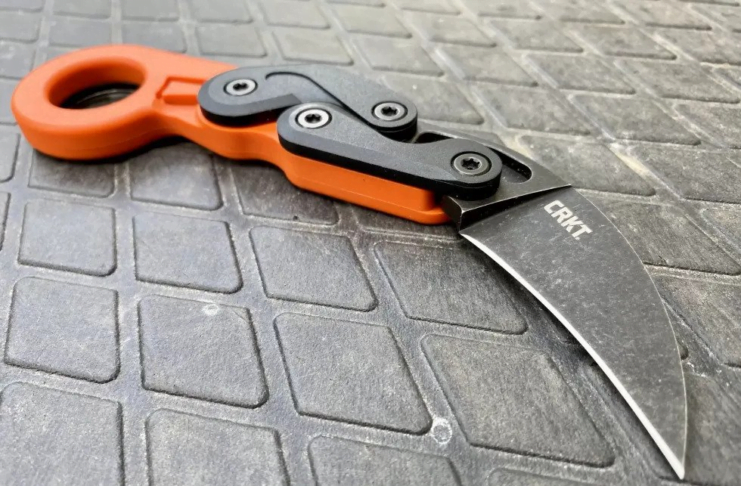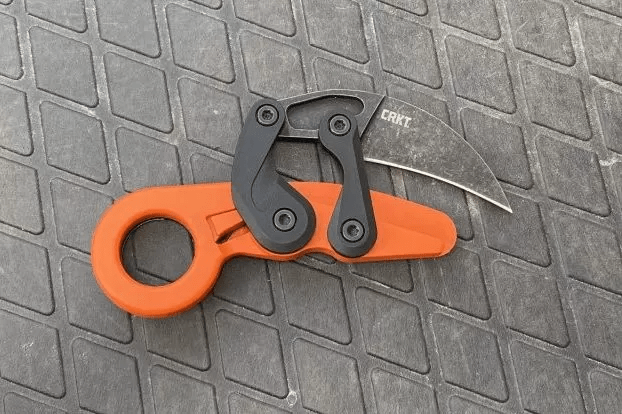
The karambit isn't new to the American knife scene, but the Provoke—CRKT's ingenious pocketknife version—adds a new twist to the fighting design. In addition, this knife has one of the slickest opening mechanisms I've seen—Let's talk shop about the CRKT Provoke.
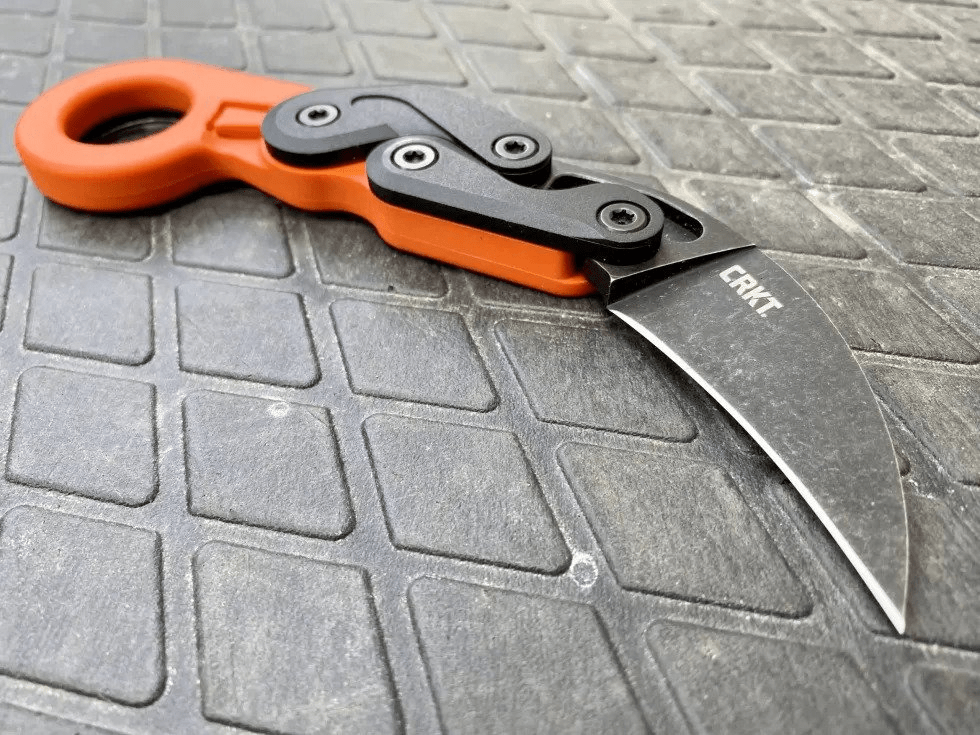
The Provoke Orange is described by CRKT as a “morphing karambit knife.” Designer Joe Caswell developed the concept of the “Kinematic” action. “Nudge the upper crossbar with your thumb—while the rest of your fingers firmly grasp the handle—and the blade lunges to life and locks into place,” CRKT writes.
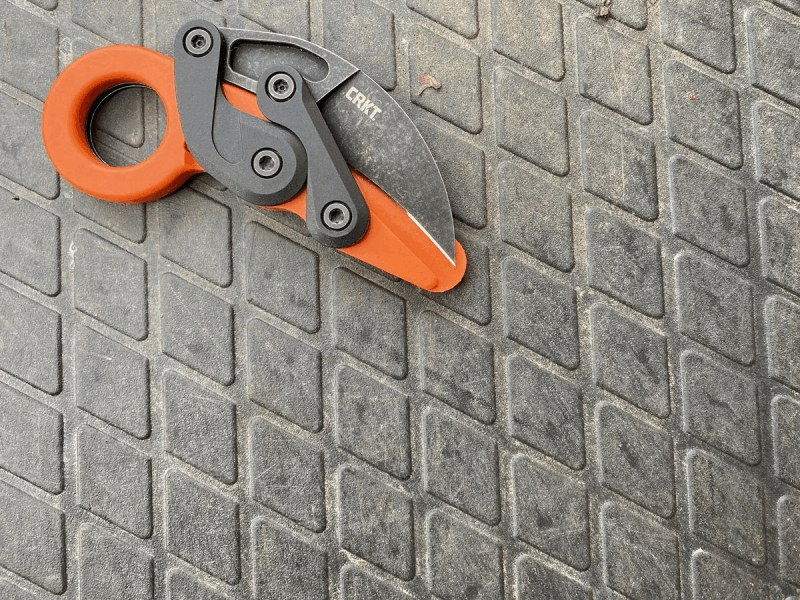
CRKT Provoke Specifications
- Blade Length 47″ (62.69 mm)
- Blade Edge Plain
- Blade Steel 4116
- Blade Finish Stonewash
- Blade Thickness 21″ (5.38 mm)
- Overall Length 19″ (182.58 mm)
- Closed Length 96″ (125.88 mm)
- Weight 70 oz. (133.24 g)
- Handle Grivory®
- Style Folding Knife w/Kinematic™
As a somewhat open practitioner of everyday carry, I often find myself deep in conversations that inevitably end with me explaining what it's all about. I carry a gun, I say, everywhere I go—at least where I'm permitted by law. “To the grocery store?” an aunt will ask. “Everywhere,” I respond, assuring her that this is the point of the practice.
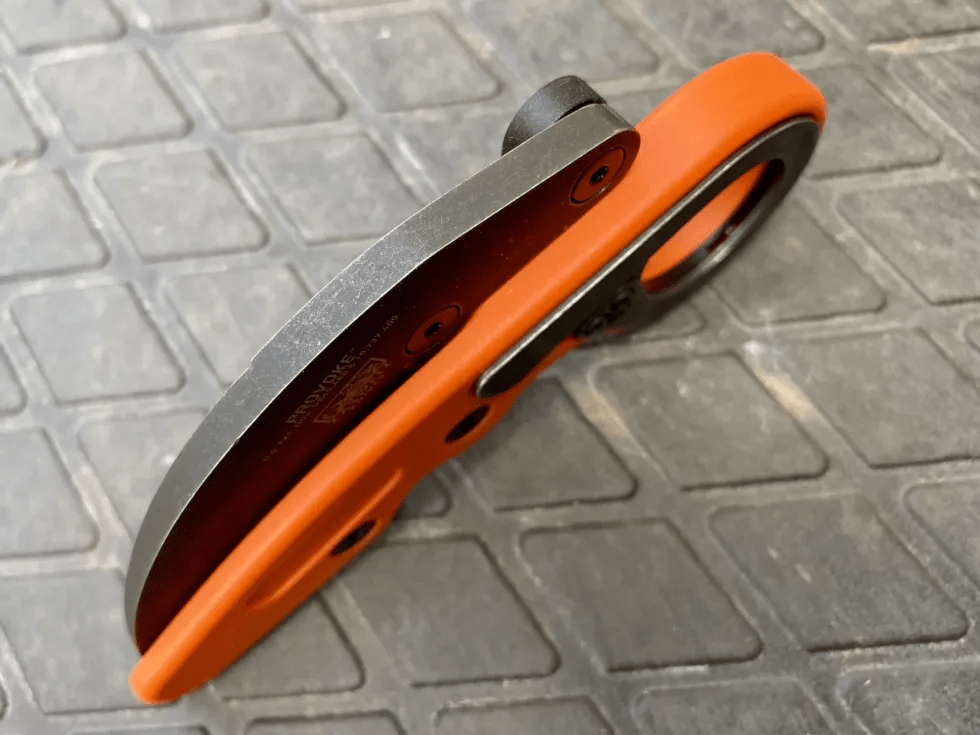
The gun, though, is only one of the tools I carry for self-defense. I also carry a knife—sometimes two. If I am carrying two, one of them is for basic cutting tasks, and the other has an entirely different purpose. And the karambit has been a favorite for me, both for speed of deployment and the design's aggressive lethality.
But the Provoke adds another important element to the mix—that of the well-crafted fidget toy.
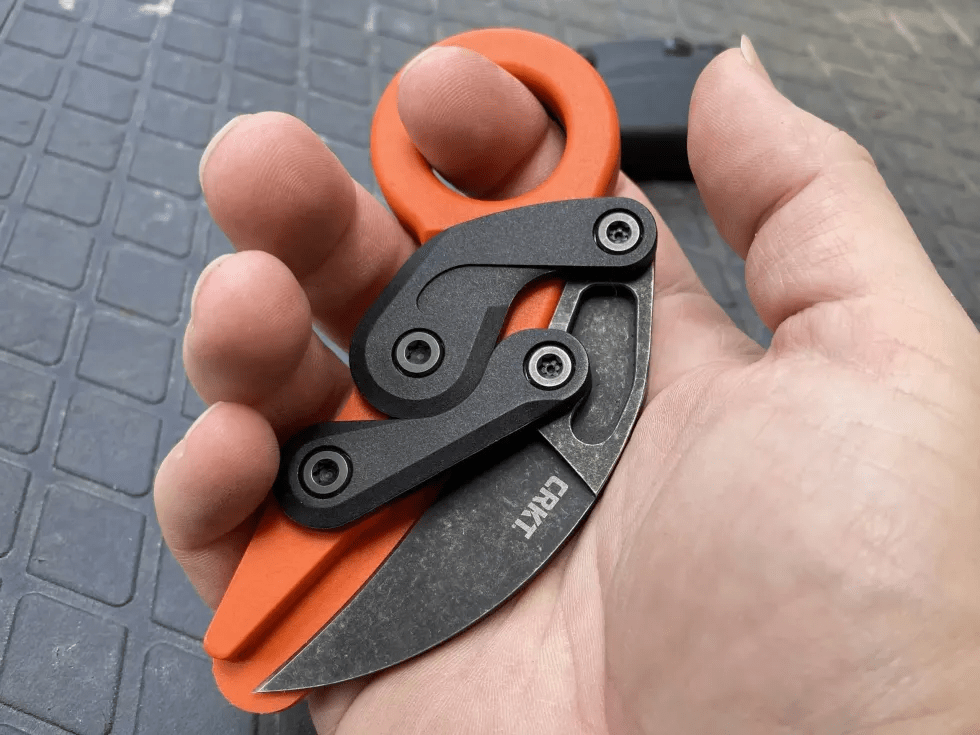
Knives as fidgets
Fidget toys? Not toys, exactly…
I can remember two distinct moments from my distant past that provided a similar level of sheer satisfaction. The first was when I bought an old Italian switchblade at a junk auction. The spring was broken, but I had the broken piece. I could place it carefully beneath the blade as I folded it up, and the action would still flip the blade open. The broken spring would also launch out of the handle, but it was a switchblade.
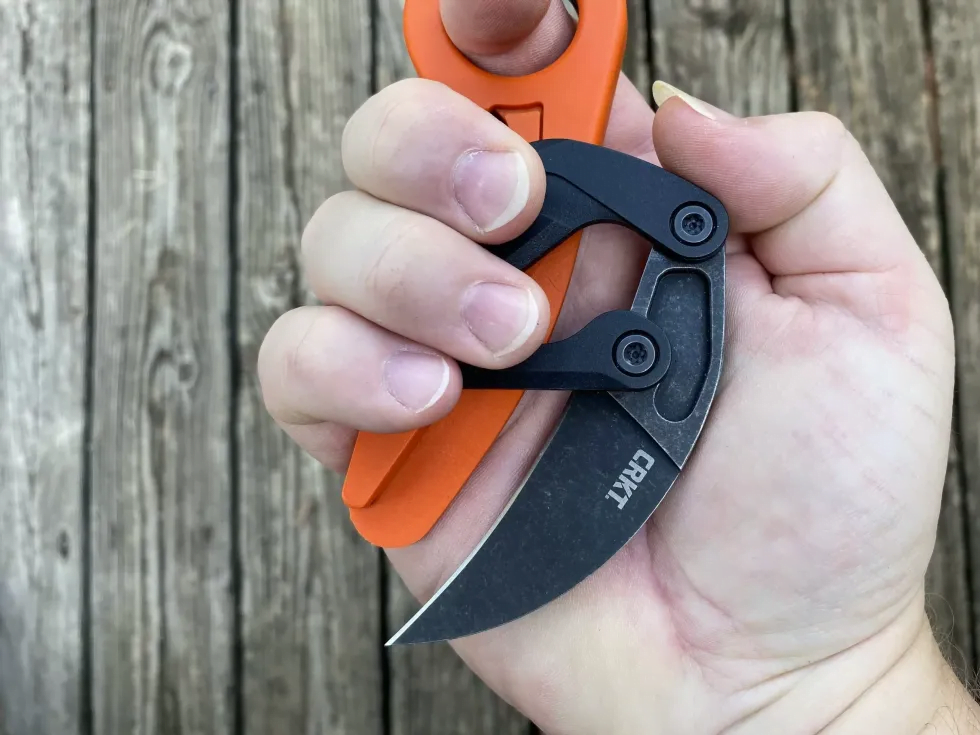
Years later, I bought one of the first Kershaw Leeks. The spring-assisted design remains entertaining. It has become an unconscious habit of mine, flipping the blade open and closing it as I ponder some kind of conundrum. If my hands are busy, my mind works more clearly.
CKRT has some rocking spring-assisted opening devices, too, now, but the CRKT Provoke is a manual knife. And it doesn't close exactly; the blade retracts. The handle covers the cutting edge well enough to prevent accidents yet allows the armatures to swing the blade in and out without any encumbrance from covers or scales.

Begin with the Provoke held in the traditional karambit grip—with the finger loop on your index finger. The cutting edge should be pointed toward your extended fingers in this position.
Place your thumb on the back of the armatures and push. Next, sweep your thumb across your palm. The blade will extend out and lock into place.
The CRKT Provoke's Blade
The Provoke's blade isn't long. Just 2.47”. That, though, is sufficient for a karambit, and there are numerous karambit with much shorter blades.
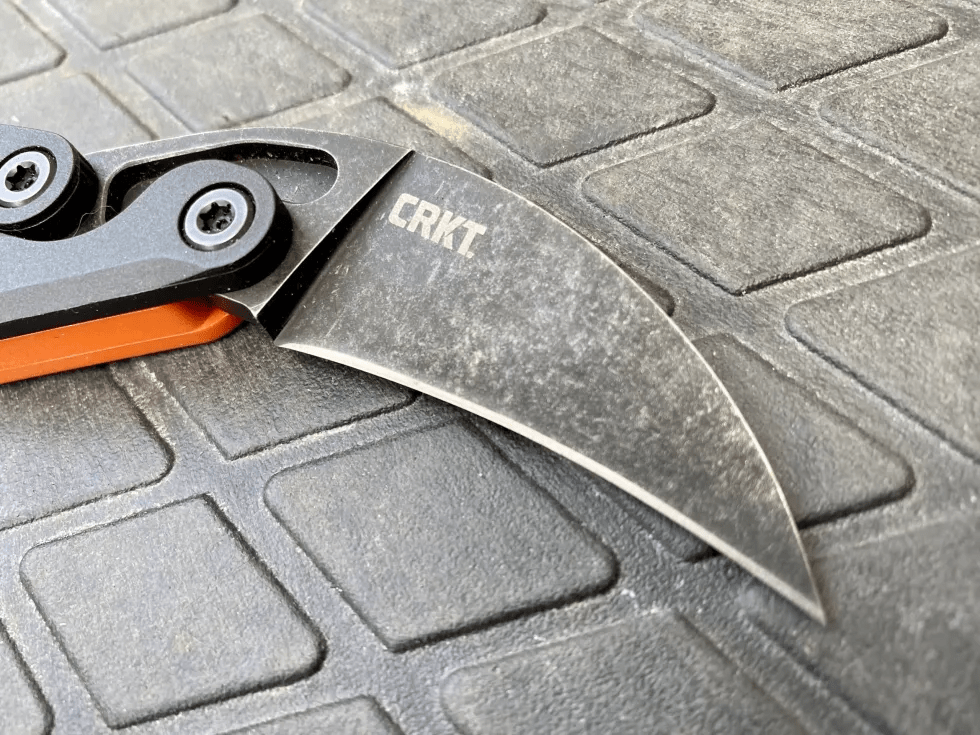
The cutting edge on the traditional karambit is not meant to stab—though that is certainly one possibility. For that purpose, there's an excellent sharp point on the end of the hawkbill.
Instead, the blade is designed to apply pressure across muscle groups and tendons and through veins and arteries. It is this that separates the karambit from other fighting knives.
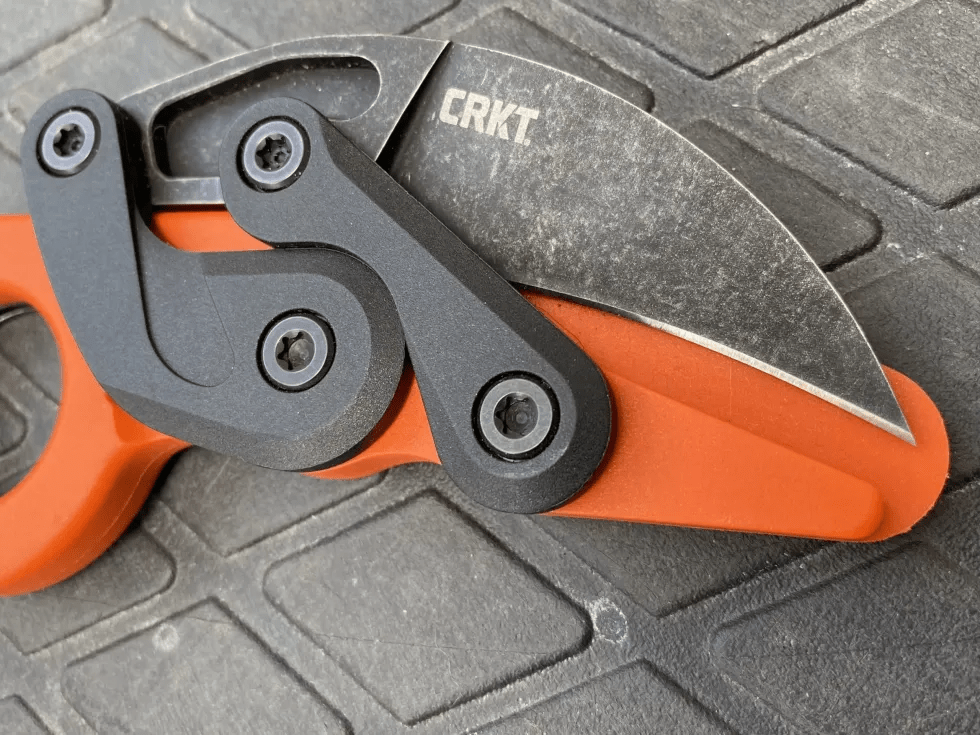
Drawing the convex cutting edge of the hawkbill blade across a bicep or the forearm can instantly immobilize a limb. While it may not be lethal, it can provide the advantage needed to extricate yourself from a fight or do what you need to stop the threat.
Exsanguination, though, can be lethal. Even superficial wounds with this type of blade can cut off the flow of oxygenated to the brain.
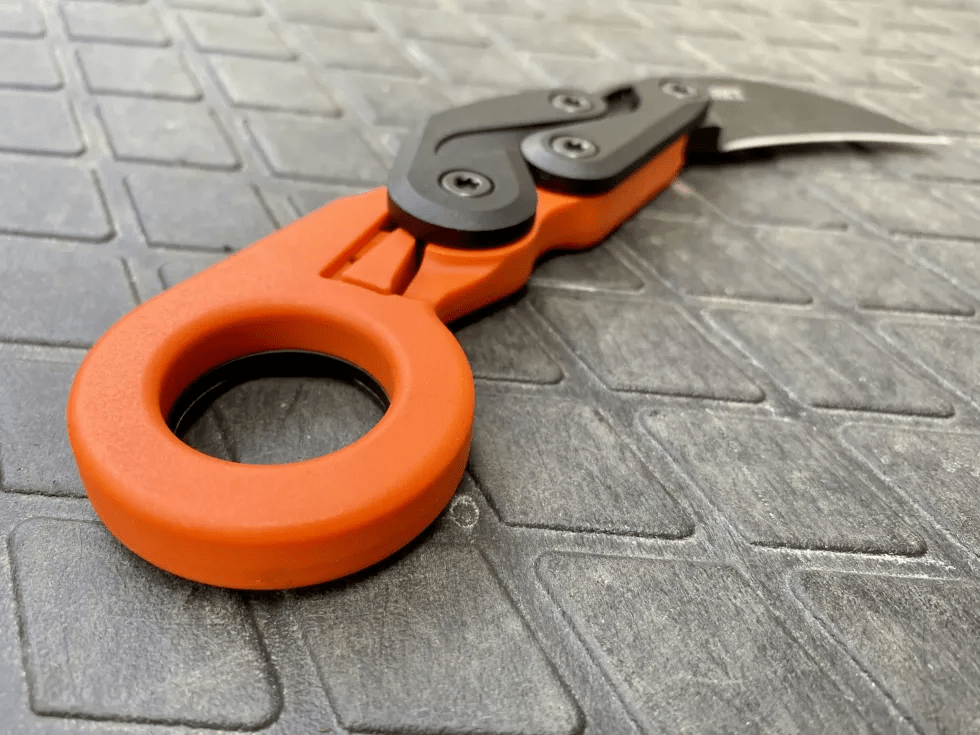
As for the steel itself, this is what CRKT calls 1.4116. This steel needs a marketing campaign. 1.4116 is very similar to 420HC. It is reputable steel often found in scalpels and kitchen knives. 1.4116 can be ground thin and remain both sharp and flexible, but it has never caught on as a fashionable material.
Some of the other Provoke options, which are more expensive, come with D2 blades, so—if steel snobbery is your thing—there are other options.
Revisiting the CRKT Provoke idea again
The CRKT Provoke provokes two distinct mixed emotions in me. This is, obviously, a defensive tool. It is also so much fun to play with. It is both things at once and represents an emotional ying-yang for me. I'm delighted—no other word for it—by the ingenuity and fluid motion of the action snapping into place. Then I feel that affinity for the defensive potential as the toy transforms into a tool as I close my fist around the handle.

The Blade Lock
The lock snaps up behind the armature structure and prevents them from returning. As a result, the knife can be closed with one hand, though it isn't as immediately accessible as it is with some other liner locks.

The Plastic Ring
The last element of the design that makes this a karambit is the ring at the back end of the handle. The Provoke Orange is made from Grivory—a hard-use thermoplastic easily molded into rigid forms. Plastic, yes, but seriously hard plastic.
Carrying the CRKT Provoke
There are two logical options. The first, and the way I've carried it most frequently, is its pocket clip. There is nothing crazy new here, but I would suggest you get into the habit—there are a couple of things to consider.
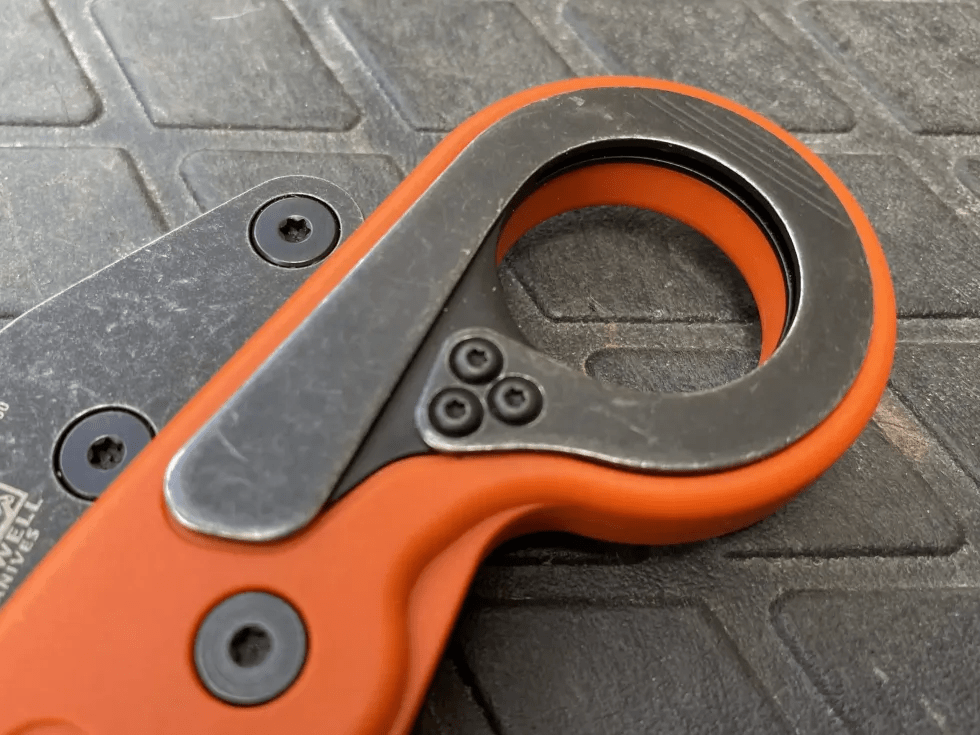
The first, and the big one, is that you will want to ensure you can carry this without opening the blade accidentally in your pocket. The clip's orientation puts the frame between your hand and moving parts. Still, get in the habit.

The second is more about the practicality and habitual nature of the draw. Grab go—again and again—until you get the system roped in with some muscle memory. As far as I can tell, there's not a dedicated trainer available from CRKT—though that could be a good investment for them, especially if it were built of cost-effective materials.
Carrying in CRKT's dedicated Provoke Sheath is also an option. This allows you to carry on a belt, vest, or bag. These are available wherever you find the knives and are typically $35 or less.
The knives begin at around $100 +/-. After that, the prices go up as steel and handle material options get fancier. So what about the orange? For a while, this was the least expensive option. Now there's another grivory-handled version that's blue, too and an electric yellow.
The CRKT Provoke is a work of art. And it is a viable EDC option, too. I wish every knife I reviewed or own had this much going for it.
Read the original article in its entirety at Breach Bang Clear.


